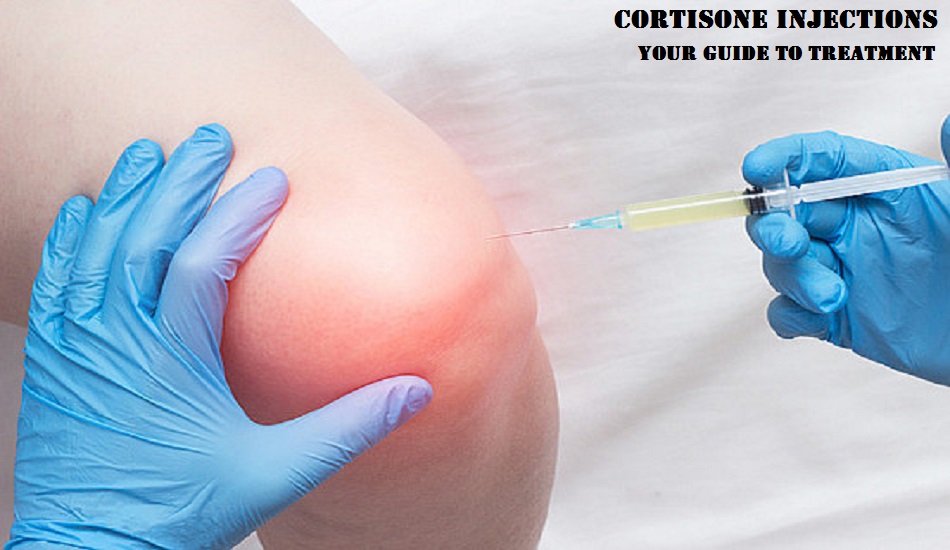Cortisone Injections: Your Guide to Treatment

Cortisone injection therapy is a treatment used to reduce inflammation and pain in the body. Cortisone is a hormone that is produced by the adrenal gland. It helps regulate blood pressure and metabolism, and it also has anti-inflammatory effects.
The cortisone is injected directly into the affected area, which helps to reduce the inflammation and provide relief from the pain. This therapy is often used for arthritis, bursitis, and tendonitis. It can relieve persistent symptoms and does not respond to other treatments.
Quick Navigation
Benefits of Cortisone Injection Therapy
Cortisone injection therapy is a popular treatment for various musculoskeletal conditions. The Benefits of cortisone injection therapy:
- Cortisone injections are a very effective treatment for inflammation.
- They can help reduce pain and swelling in the affected area.
- The injections can also help speed up the healing process.
- They are a relatively safe and minimally invasive treatment option.
- Cortisone injections are often used to treat arthritis, tendinitis, and bursitis.
Risks of Cortisone Injection Therapy
Cortisone injections are a standard treatment for pain and inflammation. While cortisone injections are generally safe, a few risks are associated with the therapy. These risks include infection, nerve damage, and bleeding. In some cases, the cortisone may not work as well as expected. Additionally, repeated cortisone injections may lead to thinning the skin or weakening the tendon.
Procedure: What to Expect During a Cortisone Injection
A cortisone injection is a standard treatment for inflammation. It can help to relieve pain, swelling, and stiffness. The injection is given into a joint, such as the knee, shoulder, or ankle.
The procedure itself is usually rapid. The physician will cleanse the area and inject the cortisone into the joint. You may feel a popping sensation when the cortisone is injected.
It is a procedure in which a corticosteroid medication is injected into the body to reduce inflammation. Cortisone injections treat various conditions, such as arthritis, bursitis, carpal tunnel syndrome, and tendonitis. Corticosteroid medication can help to decrease inflammation and pain. The cortisone injection procedure usually takes only a few minutes. The skin is cleaned and then numbed with an anesthetic. The corticosteroid medication is then injected into the area of inflammation. After the injection, the patient may experience some minor discomfort or swelling at the injection site. This typically resolves within a few days.
Recovery and Results

What to expect after the injection and how long it might take to see results?
If you’re considering a cortisone injection to treat your pain, you likely want to know what to expect. This article will outline the typical recovery and results in the timeline after a cortisone injection.
It’s essential to note that individual results may vary, so speaking with your doctor about what you can expect is critical.
The most common side effects of a cortisone injection are bruising and swelling at the injection site. These typically resolve within a few days. You may also share some discomfort and stiffness after the injection. This typically resolves within a week or two.
Most people begin to see results from the cortisone injection within a few days or weeks. However, it can bring up to three months for the full effects of the injection to be seen.
How Does Cortisone Injection Therapy Work?
Cortisone injections are a standard treatment for a variety of inflammatory conditions. The injection contains:
- A corticosteroid.
- A synthetic version of cortisol.
- The adrenal gland naturally produces the hormone.
Cortisol is released in reaction to pressure and helps to regulate blood sugar levels, inflammation, and the immune system. When injected into inflamed tissue, the corticosteroid reduces inflammation and pain.
How Long do Cortisone Injections Last?
Cortisone injections are a popular treatment for inflammation and pain. The effect of a cortisone shot can last anywhere from 6 weeks to 6 months, depending on the individual and the location of the injection. Cortisone injections are usually given in the knees, hips, or shoulders. They can also treat conditions such as tennis elbow, plantar fasciitis, and carpal tunnel syndrome.
Conclusion
Cortisone injection therapy is a viable option for treating many medical conditions. If you consider this treatment, be sure to talk to your doctor about the possible risks and benefits.
In conclusion, cortisone injection therapy is a safe and effective way to treat various medical conditions. It is essential to confer with a doctor before starting cortisone injection therapy to ensure that it is the best treatment option.
